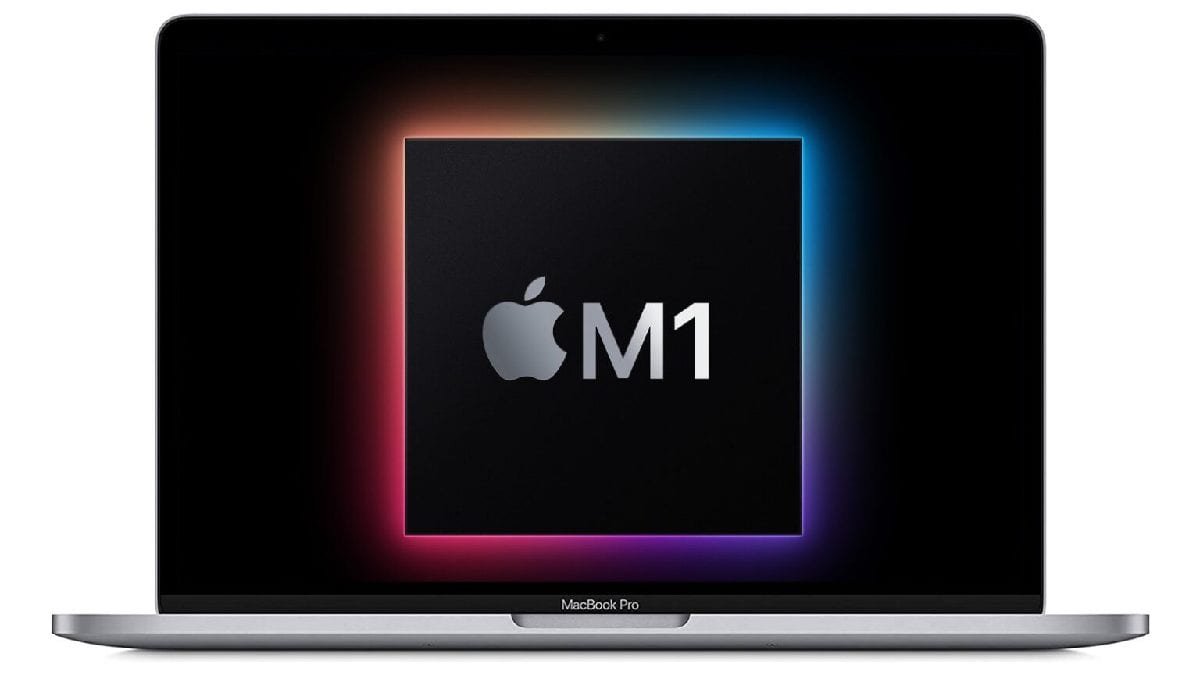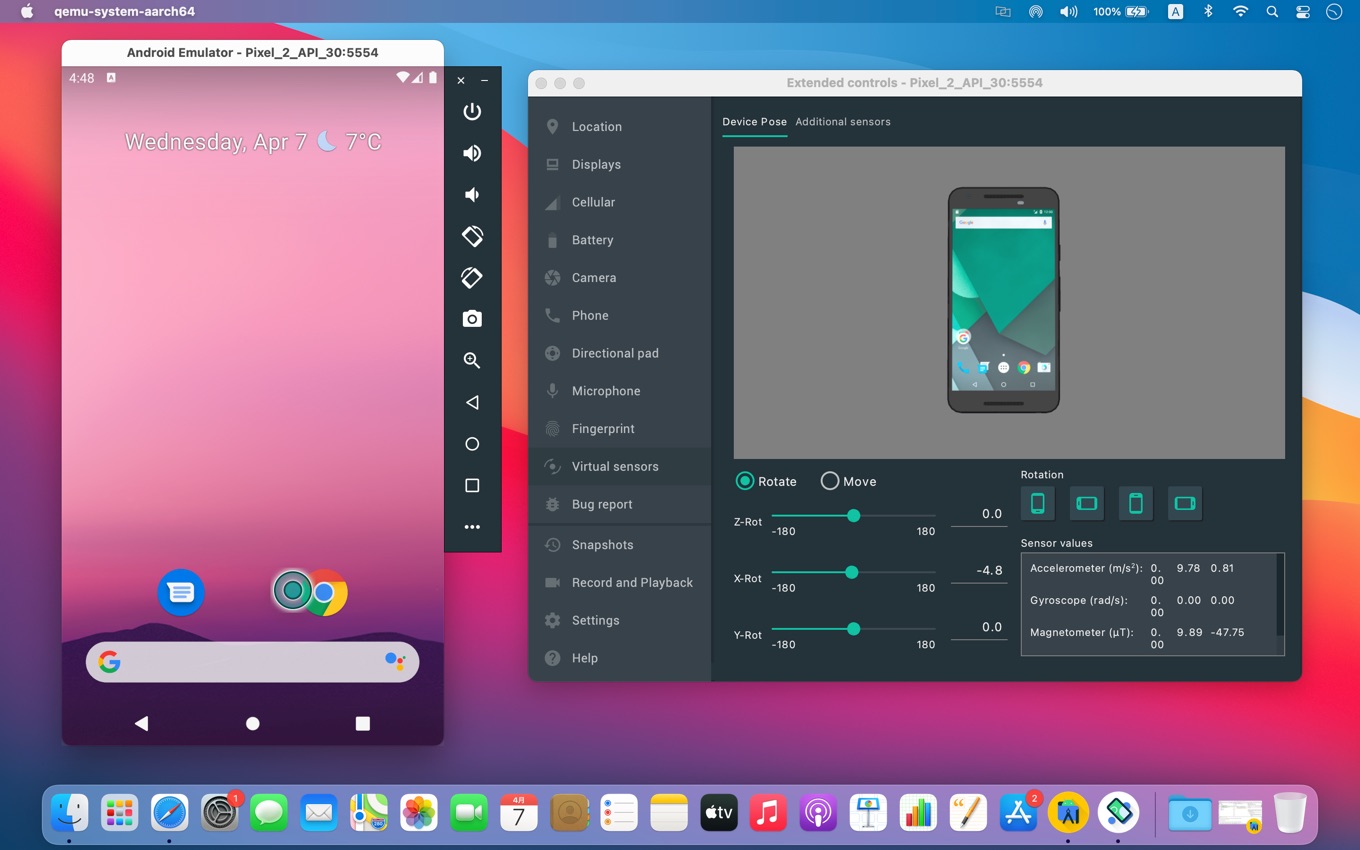
This guide explains how to prepare the Android Emulator for testing your app.
Overview
Run Android Emulator On Mac M1
- Android studio can currently run with the M1 chipset using Rosetta, that translate machine code from Intel to ARM. The price is a 30% performances drop that may not be noticeable.
- I’d honestly look into running the iOS version if the app your interested in if possible in the meantime. Yeah waiting again, either android emulator can work properly on M1 chip or my apps has been put on IOS and Mac version.
Nov 19, 2020 You can now download the Android Studio Canary. In which you can run the android emulator with out any limitation of the android emulator m1 preview. In android emulator m1 preview there are issues with webview, device skin, sound etc.now you dont have to worry about that Here is the link. Just tried to run Android Studio (4.1.1) on Macbook Pro M1, it works, but: No emulators at this point. Can build and publish on Android Phone (Nexus 4a in my case) IntelliJ has some lags in performance on M1 (because it is not native, and Intel built), but feels pretty usable.
The Android Emulator can be run in a variety of configurationsto simulate different devices. Each configuration is called a virtualdevice. When you deploy and test your app on the emulator, you selecta pre-configured or custom virtual device that simulates a physicalAndroid device such as a Nexus or Pixel phone.
The sections listed below describe how to accelerate the Androidemulator for maximum performance, how to use the Android Device Managerto create and customize virtual devices, and how to customize theprofile properties of a virtual device. In addition, a troubleshootingsection explains common emulator problems and workarounds.
Sections
Hardware Acceleration for Emulator Performance
How to prepare your computer for maximum Android Emulator performanceby using either Hyper-V or HAXM virtualization technology. Because theAndroid Emulator can be prohibitively slow without hardwareacceleration, we recommend that you enable hardware acceleration onyour computer before you use the emulator.
Managing Virtual Devices with the Android Device Manager
How to use the Android Device Manager to create and customize virtualdevices.
Editing Android Virtual Device Properties
How to use the Android Device Manager to edit the profile properties of avirtual device.
Android Emulator Troubleshooting
In this article, the most common warning messages and issues that occurwhile running the Android Emulator are described, along withworkarounds and tips.
Note

If you are using a Mac with an Apple chip, such as the M1, you will need to install the Android Emulator for M1 preview from GitHub.
After you have configured the Android Emulator, seeDebugging on the Android Emulatorfor information about how to launch the emulator and use it for testingand debugging your app.
Note
As of Android SDK Tools version 26.0.1 and later, Google has removed support for existing AVD/SDK managers in favor of their new CLI (Command Line Interface) tools. Because of this deprecation change, Xamarin SDK/Device Managers are now used instead of Google SDK/Device Managers for Android Tools 26.0.1 and later. For more information about the Xamarin SDK Manager, see Setting up the Android SDK for Xamarin.Android.
Android Studio Apple M1 Emulator
[ad_1]
For years, if Apple users wanted to run their favorite iOS apps on their computer, they’d have to do so via third-party applications, emulators, or other non-official methods. Now, if you own an Apple Silicon Mac (the newer ones with an M1 processor) and have the Big Sur iOS, you’ll have able to run iPhone and iPad apps on your Mac computer.
See also:Best Apple Macbooks
What’s the Benefit of Using iOS Apps on My Mac?
Applications on the iPhone and iPad have come a long way. Now, you can have the full functionality of word processors, video editors, and other applications in the palm of your hand. Especially if you work on your iPad frequently, you may want to transfer data or workflows from your tablet to your computer. With this new Big Sur OS update, you can do just that.
Can My Mac Run iOS Apps?

As mentioned, you can only run iOS apps on your Mac if your computer has an Apple Silicon chip. To check if your device is capable, follow these steps below:
- Click on the Apple logo in the top left corner of your screen.
- Click on About this Mac.
- If, under the Chip section, it says Apple M1, then you’re capable of running iOS apps on your computer.
Run Android Emulator On Mac M1 Free
How to Run iOS Apps on Mac

Downloading iOS apps on your Mac computer is extremely simple. If you know how the App Store works on your Mac, you’ll have no problem at all!

- Open the App Store on your Mac.
- Click on the search field in the App Store, and type in the app you want to download. Keep note that not all iOS apps are available on the Mac Apple Store.
- In the search results, select the iPhone & iPad Apps tab.
- Click the Get button next to the app search result.
- Download it, and you’ll be able to run iOS apps on a Mac!
What is an Emulator and Should I Use One?
With the new M1 MacBooks and its silicon chips, emulators have become rather obsolete and you don’t see them mentioned often like 10 years ago in the early 2010s. In short, an emulator is a program that ’emulates’ another kind of device or service. For example, in the early days of the Mac, you would have to download an emulator in order to run Windows OS on your Mac. Nowadays, there are more comprehensive services (one even built into the Mac itself) that allow you to do this more seamlessly.
Back in the day, it was extremely common to download emulators from shady third-party websites in order to run iOS apps, Gameboy games, and Windows programs on a Mac. Not only would you have to find the emulator application online, but you’d have to find the individual apps or programs you want to run as well. This made things pretty complicated and many people infected their devices with viruses and general malware.
If you have an older Mac and desperately need to use an iOS app on your computer, yes, you should use an emulator. There are plenty of resources on the internet to help guide you through the process to ensure you don’t download a virus and ruin your computer. If the idea of downloading a program off an unverified third-party source makes you feel uncomfortable, check out which Macs you would need to run iOS apps without an emulator.
Looking for recommendations? Here are just a few worth checking out:
What’s the Best Mac for iOS Apps?
All Macs manufactured in 2020 and beyond will have an Apple silicon chip (also known as Apple M1). If you want to run iOS apps without using an emulator, we would recommend purchasing one of the models below.
[ad_2]
Source link